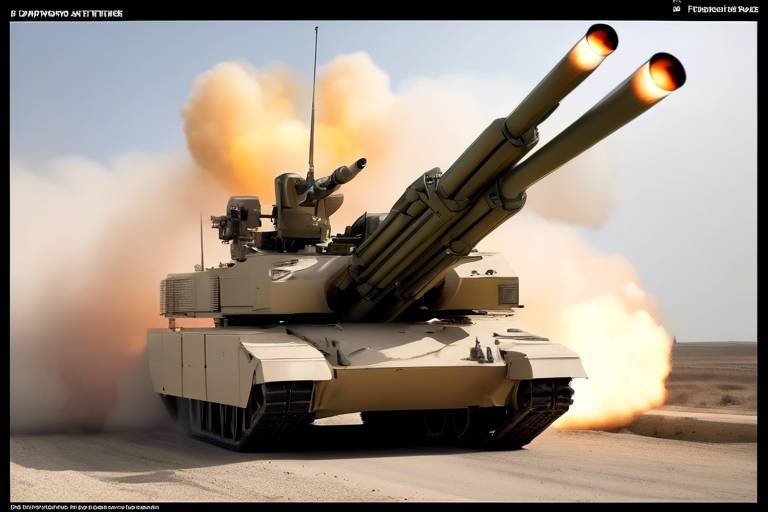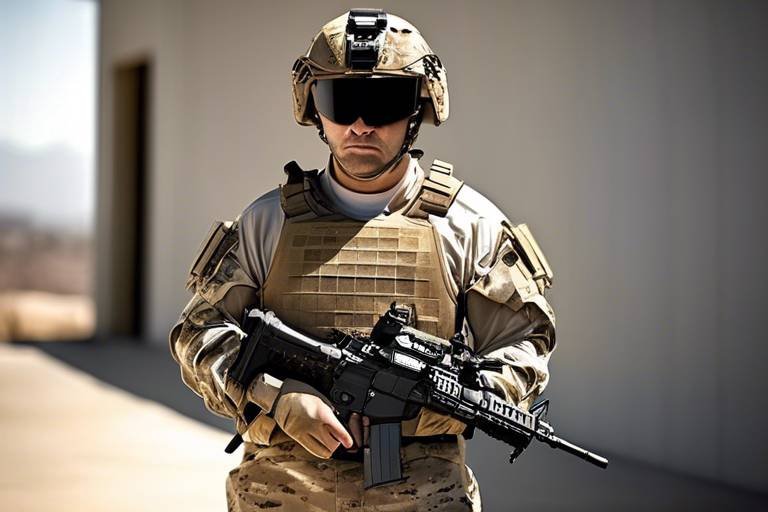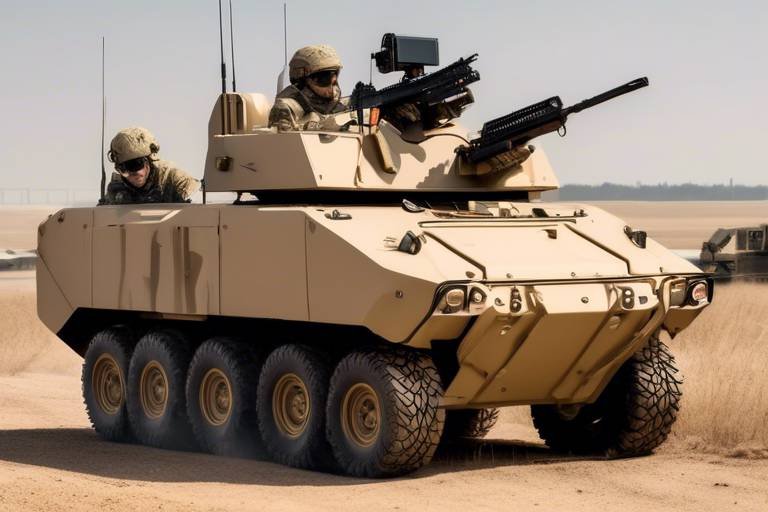Exploring Biometric Wearables for Military Health Monitoring
In an era where technology is advancing at lightning speed, the military is harnessing these innovations to enhance the health and performance of its personnel. Biometric wearables have emerged as a game-changer in this domain, providing a wealth of physiological data that can be pivotal for decision-making on the battlefield. But what exactly are these devices, and why are they so crucial for military applications? This article delves into the innovative use of biometric wearables in military settings, focusing on their applications, benefits, and challenges in monitoring the health and performance of military personnel.
Biometric wearables are sophisticated devices designed to track physiological data such as heart rate, body temperature, and even stress levels. Over the years, these devices have evolved from simple fitness trackers to advanced medical-grade sensors capable of providing real-time insights into a soldier's health. Their significance in various sectors, particularly in the military, cannot be overstated. By offering a way to monitor health metrics continuously, these wearables help ensure that soldiers are fit for duty and can perform optimally under pressure.
Biometric wearables have found diverse applications within military settings. Picture a soldier in the field, equipped with a wearable device that tracks vital signs and stress levels, providing commanders with crucial information about their team's health. These devices can monitor:
- Heart rate variability
- Body temperature
- Oxygen saturation
- Stress levels
This continuous monitoring allows for immediate intervention in case of health deteriorations, potentially saving lives. Moreover, by integrating these wearables into daily operations, the military can gather invaluable data that informs training and operational strategies.
The implementation of biometric wearables offers numerous advantages that can significantly enhance military operations. One of the most compelling benefits is the access to real-time health data. This capability allows commanders to make informed decisions quickly, ensuring that soldiers are not only prepared but also in peak physical condition. Additionally, biometric monitoring leads to improved soldier readiness by:
- Identifying health issues before they escalate
- Enhancing recovery protocols
- Facilitating personalized training regimens
In a high-stakes environment like the military, having immediate access to health metrics can be the difference between mission success and failure.
Despite the myriad benefits, biometric wearables are not without their challenges. One major concern is data privacy. With sensitive health information being collected, there are legitimate fears about who has access to this data and how it is used. Additionally, technological limitations can hinder the effectiveness of these devices. For instance, issues such as battery life, connectivity in remote areas, and the accuracy of sensors under extreme conditions can pose significant hurdles. Addressing these challenges is crucial for the successful integration of biometric wearables into military health monitoring systems.
Integrating biometric wearables with existing military technologies can enhance their effectiveness and utility. Imagine a scenario where wearable data is seamlessly transmitted to command centers, allowing for real-time health assessments alongside operational metrics. Achieving this interoperability requires a concerted effort to develop standardized protocols and systems that can communicate effectively. By doing so, the military can leverage biometric data for comprehensive health monitoring, ultimately leading to better outcomes for personnel.
As technology continues to evolve, so too do biometric wearables. The future holds exciting possibilities, including the integration of advanced sensors and artificial intelligence (AI). These innovations could lead to devices that not only monitor health but also predict potential health issues before they arise. Imagine wearables that can analyze data patterns and alert soldiers and commanders to potential risks, allowing for proactive measures to be taken. The implications for military health monitoring are profound, paving the way for a healthier and more prepared fighting force.
Real-world examples illustrate the successful use of biometric wearables in military contexts. For instance, a recent pilot program involved the deployment of wearables in a special operations unit. The results showed a significant decrease in heat-related illnesses, thanks to real-time monitoring of hydration levels and body temperature. Another case study highlighted how biometric data helped tailor training programs to individual soldiers, resulting in enhanced performance and reduced injury rates. These examples underscore the tangible benefits that biometric wearables can provide in military settings.
In conclusion, the use of biometric wearables in military health monitoring represents a significant advancement in how we approach soldier health and performance. While challenges remain, the benefits far outweigh the obstacles. Ongoing research and development are essential to optimize the use of these devices. It is recommended that military organizations invest in robust data privacy measures, enhance technological capabilities, and foster integration with existing systems to fully harness the potential of biometric wearables.
- What are biometric wearables? Biometric wearables are devices that track physiological data such as heart rate, temperature, and stress levels.
- How do they benefit military personnel? They provide real-time health data, enhance decision-making, and improve soldier readiness.
- What challenges do these devices face? Challenges include data privacy concerns and technological limitations like battery life and connectivity.
- What is the future of biometric wearables in the military? The future includes advanced sensors and AI integration, leading to predictive health monitoring.

Introduction to Biometric Wearables
Biometric wearables have revolutionized the way we monitor and understand our health, and this transformation is especially significant in military settings. These are not just fancy gadgets; they are sophisticated devices designed to track physiological data such as heart rate, body temperature, and even stress levels. Imagine having a personal health assistant that fits right on your wrist, constantly collecting data to ensure you're at your best. This technology has evolved from simple pedometers to advanced sensors that can provide real-time insights into a soldier's health status.
The significance of biometric wearables extends beyond personal fitness; they play a crucial role in enhancing the performance and safety of military personnel. With the demanding nature of military operations, where physical and mental resilience is paramount, these devices can serve as a lifeline. They not only help in monitoring vital signs but also alert commanders about the health status of their troops, enabling timely interventions. This capability is akin to having a radar system that detects not just enemy movements but also the well-being of soldiers on the ground.
As we delve deeper into the evolution of these devices, it's important to recognize their features. Most biometric wearables today are equipped with:
- Heart Rate Monitors: Continuously track heart rates to assess physical exertion levels.
- GPS Tracking: Helps in navigation and monitoring the location of personnel.
- Sleep Tracking: Analyzes sleep patterns to ensure soldiers are well-rested.
- Stress Monitoring: Utilizes various metrics to gauge stress levels, which is critical in high-pressure situations.
In various sectors, from healthcare to sports, the adoption of biometric wearables has proven their worth. However, the military context adds a unique layer of complexity and necessity. The ability to monitor health metrics in real-time can significantly enhance decision-making processes, leading to better outcomes for both individual soldiers and military operations as a whole. This technology is not just a trend; it's a vital component in the future of military health monitoring.
In summary, biometric wearables are not merely technological novelties; they represent a significant leap in how we can monitor and improve health outcomes, especially in the high-stakes environment of the military. As we explore their applications, benefits, and challenges in the following sections, it becomes clear that these devices are more than just tools—they are essential allies in the quest for enhanced soldier health and performance.
- What are biometric wearables? Biometric wearables are devices that track physiological data such as heart rate, temperature, and stress levels.
- How do biometric wearables benefit military personnel? They provide real-time health data, which helps in monitoring soldier health and readiness.
- Are there privacy concerns with using biometric wearables? Yes, data privacy is a significant challenge that needs to be addressed when implementing these technologies.
- What future trends can we expect in biometric wearables? Emerging trends include advanced sensors, AI integration, and improved data analytics for better health monitoring.
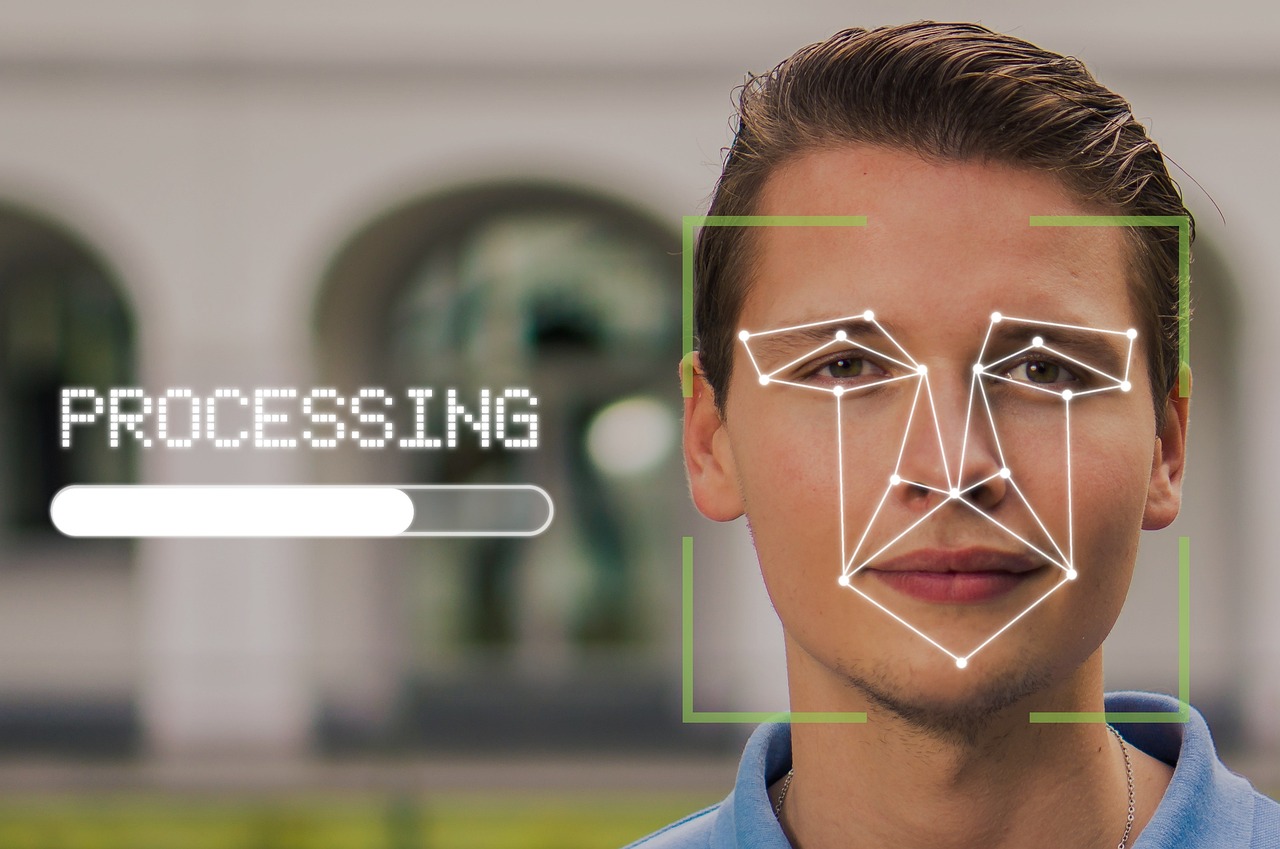
Applications in Military Settings
Biometric wearables are revolutionizing the way military personnel monitor their health and performance in real time. These devices, ranging from smartwatches to specialized sensors, are designed to capture a plethora of physiological data that can be crucial for maintaining soldier well-being. Imagine a soldier on the front lines, equipped not just with weapons but also with technology that can provide immediate insights into their physical state. This integration of technology into military operations is not just a trend; it is a transformation that enhances operational efficiency and soldier safety.
One of the primary applications of biometric wearables in military settings is the continuous monitoring of vital signs such as heart rate, body temperature, and respiratory rate. This data is invaluable, especially in high-stress environments where physical and mental health can deteriorate rapidly. For instance, a soldier experiencing elevated heart rates and abnormal body temperatures may be at risk of heat exhaustion or other serious conditions. By utilizing biometric wearables, commanders can receive alerts about these potential health issues in real time, allowing for prompt medical intervention.
Additionally, biometric wearables are instrumental in assessing the mental health of military personnel. Stress and fatigue can severely impact a soldier's performance and decision-making abilities. Many of these devices come equipped with features that monitor stress levels through heart rate variability and other metrics. This information can be used to implement necessary interventions, such as rest periods or mental health support, ultimately leading to improved resilience and operational readiness.
Moreover, the data collected from biometric wearables can be aggregated and analyzed to identify trends and patterns in soldier health across various missions. For example, if a particular unit consistently shows signs of fatigue or stress during specific operations, military leaders can adjust training, resource allocation, or mission planning to better support their troops. This proactive approach to health monitoring fosters a culture of care and vigilance, ensuring that soldiers are not only prepared for combat but also for the physical and psychological demands that come with it.
As we delve deeper into the applications of biometric wearables, it's essential to highlight their role in training environments. During training exercises, wearables can track performance metrics such as stamina, agility, and recovery times. This data can be used to tailor training programs to individual soldier needs, enhancing their physical capabilities and ensuring they are combat-ready. For instance, if data shows that a soldier is struggling with endurance, trainers can modify their regimen to focus on building stamina, thereby optimizing performance.
In summary, the applications of biometric wearables in military settings extend far beyond simple health tracking. They are vital tools that provide real-time insights into both physiological and psychological states, enabling informed decision-making for commanders and support for soldiers. As technology continues to advance, the potential for these devices to further enhance military operations is boundless, making them an essential component of modern military strategy.
- What types of biometric wearables are used in the military?
Military applications utilize a range of devices, including smartwatches, heart rate monitors, and specialized sensors designed for specific health metrics.
- How do biometric wearables improve soldier health?
These devices provide real-time monitoring of vital signs and stress levels, allowing for immediate medical interventions and better overall health management.
- Can biometric data be used for training purposes?
Absolutely! Data from wearables can help tailor training programs to individual soldiers’ needs, improving their performance and readiness.
- What are the privacy concerns surrounding biometric wearables?
Data privacy is a significant concern, as sensitive health information must be protected to ensure soldiers' rights and confidentiality.

Benefits of Biometric Monitoring
In the ever-evolving landscape of military health, biometric monitoring stands out as a game-changer. Imagine having the ability to track a soldier's health in real-time, almost like having a personal health assistant right on their wrist. This technology not only enhances the well-being of military personnel but also significantly impacts operational efficiency. One of the most compelling benefits of biometric wearables is the provision of real-time health data. This means that commanders can monitor vital signs such as heart rate, respiratory rate, and even stress levels instantly. With this information at their fingertips, decisions can be made swiftly, ensuring that soldiers receive the care they need when they need it most.
Moreover, the integration of biometric wearables allows for enhanced decision-making processes. For instance, if a soldier's heart rate spikes during a mission, it could indicate extreme stress or exhaustion. Commanders can then make informed decisions about whether to continue the operation or provide immediate support. This proactive approach not only safeguards the health of the soldiers but also improves overall mission success rates. In addition, the continuous monitoring of health metrics leads to improved soldier readiness. When military personnel are aware of their health status, they can take necessary actions to maintain optimal performance levels, similar to how athletes monitor their training regimes to peak at the right moment.
Furthermore, biometric wearables can also foster a culture of health awareness among military personnel. By regularly engaging with their health data, soldiers become more conscious of their physical and mental well-being. This can lead to healthier lifestyle choices, ultimately reducing the risk of long-term health issues. For example, a soldier who receives alerts about irregular sleep patterns may take steps to improve their sleep hygiene, enhancing their overall performance.
However, the benefits of biometric monitoring extend beyond individual health. They contribute to strategic military planning. Aggregated health data from wearables can provide insights into the overall fitness levels of troops, helping military leaders to better allocate resources and plan training exercises. This data-driven approach can lead to more efficient deployment of personnel and resources, ultimately enhancing operational readiness.
To illustrate these benefits, consider a recent study that highlighted the positive impact of biometric wearables on soldier health. In a controlled environment, soldiers equipped with wearables showed a 30% decrease in stress-related incidents when compared to those without the technology. This statistic underscores the potential of biometric monitoring to not only improve individual health but also to enhance unit cohesion and mission effectiveness.
In summary, the benefits of biometric monitoring in military settings are profound. From real-time health data that informs critical decisions to fostering a culture of health awareness, these devices are revolutionizing how military personnel manage their health. As we look to the future, the continued integration of biometric wearables promises even greater advancements in soldier health and operational readiness.
- What types of data do biometric wearables collect? Biometric wearables typically track vital signs such as heart rate, respiratory rate, body temperature, and stress levels.
- How do biometric wearables improve soldier readiness? By providing real-time health data, soldiers can make informed decisions about their health, leading to better performance and preparedness.
- Are there privacy concerns associated with biometric monitoring? Yes, data privacy is a significant concern, and measures must be taken to protect the personal health information of military personnel.
- Can biometric wearables be integrated with other military technologies? Absolutely! Integration with existing systems can enhance data utilization and improve overall health monitoring capabilities.

Challenges and Limitations
Despite the promising advancements in biometric wearables for military health monitoring, there are several challenges and limitations that need to be addressed. One of the primary concerns is data privacy. With sensitive health information being collected, there is a significant risk of unauthorized access and data breaches. Military personnel may feel uneasy about their physiological data being stored and potentially misused, leading to a lack of trust in these technologies.
Additionally, the technological limitations of biometric wearables cannot be overlooked. While these devices are designed to be robust and reliable, they often face issues such as battery life constraints, sensor accuracy, and environmental adaptability. For instance, extreme weather conditions or combat scenarios can affect the performance of these devices, rendering them less effective in critical situations.
Another challenge is the integration of biometric data into existing military workflows. Military operations are often fast-paced and dynamic, requiring seamless data integration for timely decision-making. However, many current systems may not be equipped to handle the influx of real-time biometric data. This can lead to information overload, where decision-makers are bombarded with data that may not be actionable in the heat of the moment.
Moreover, there is a need for training among military personnel to effectively use and interpret the data generated by these wearables. Without proper understanding, the potential benefits of these devices can be diminished. This training requirement can also impose additional costs and logistical challenges for military organizations.
Lastly, there is the issue of cost. Developing, implementing, and maintaining biometric wearables can be quite expensive. Military budgets are often tight, and investing in new technologies can divert funds from other critical areas. Balancing the costs of these innovations with their potential benefits is a delicate act that military leaders must navigate.
In summary, while biometric wearables hold great potential for enhancing military health monitoring, addressing these challenges is crucial for their successful implementation. By focusing on data privacy, technological limitations, integration issues, training needs, and cost management, the military can better leverage these devices to improve the health and performance of its personnel.
- What are biometric wearables? Biometric wearables are devices that monitor physiological data such as heart rate, stress levels, and other health indicators.
- How do these devices improve military health monitoring? They provide real-time data that can aid in decision-making and enhance soldier readiness.
- What are the main challenges associated with biometric wearables? Key challenges include data privacy, technological limitations, integration with existing systems, training needs, and cost.
- Can biometric wearables be used in combat situations? Yes, but their effectiveness may be impacted by environmental factors and the need for robust data integration.
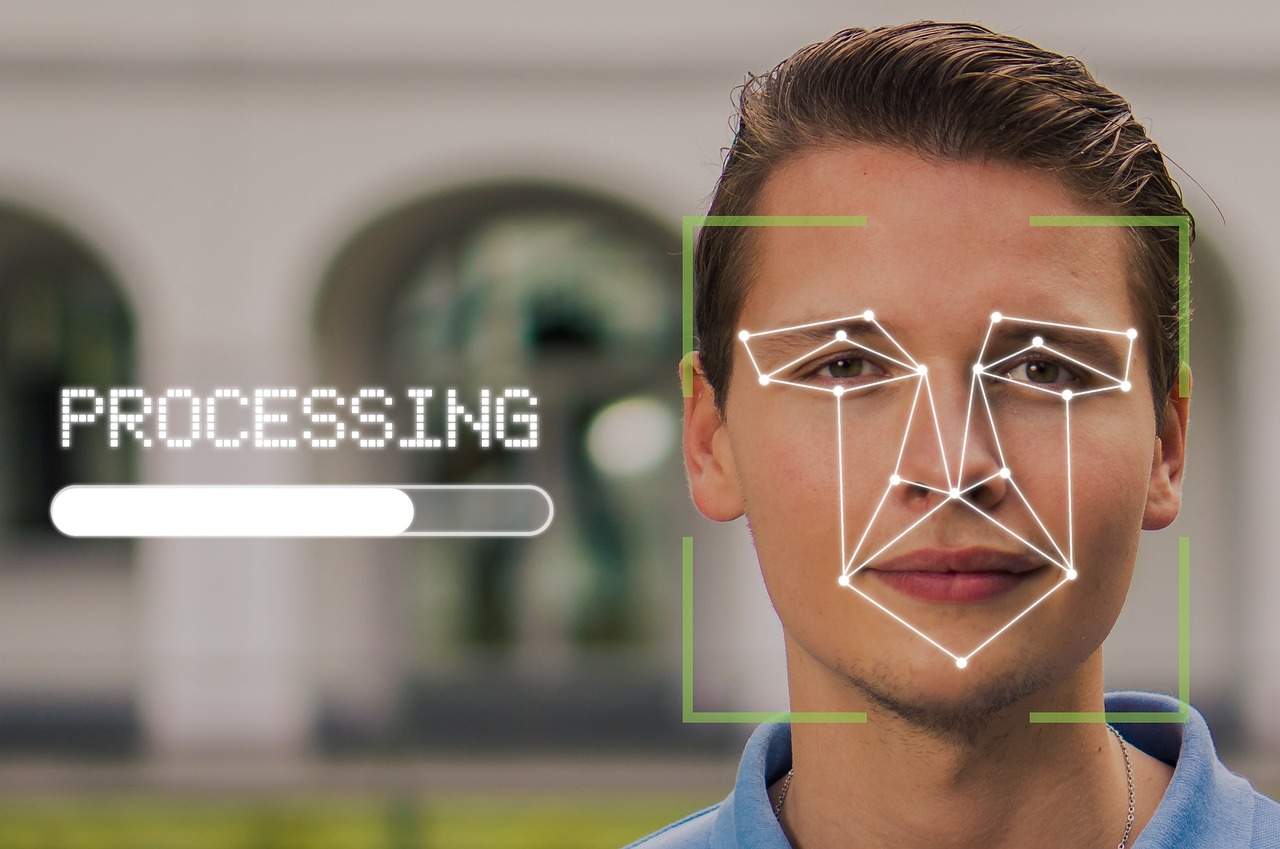
Integration with Existing Technologies
Integrating biometric wearables with existing military technologies is not just a futuristic concept; it's a crucial step towards enhancing the operational efficiency and health monitoring of military personnel. Imagine a scenario where a soldier's biometric data seamlessly communicates with their tactical gear, providing real-time insights into their health status while they are on a mission. This level of integration can significantly improve decision-making processes and operational readiness.
To understand how this integration can be achieved, we need to consider the various technologies currently in use within military settings. These include communication systems, command and control software, and health management systems. By enabling biometric wearables to interface with these technologies, we can create a comprehensive health monitoring ecosystem. For instance, when a wearable device detects an abnormal heart rate or elevated stress levels, it can automatically alert the command center, allowing for prompt medical intervention.
Moreover, interoperability is key to successful integration. This means that biometric wearables must be compatible with various existing devices and platforms. The use of standardized protocols and APIs (Application Programming Interfaces) can facilitate this compatibility. When biometric data can be easily shared and analyzed across different systems, it enhances the ability to monitor soldiers' health effectively. In the table below, we summarize some of the critical technologies that can be integrated with biometric wearables:
| Technology | Integration Benefits |
|---|---|
| Communication Systems | Real-time alerts and updates on soldier health |
| Command and Control Software | Enhanced situational awareness and decision-making |
| Health Management Systems | Comprehensive health records and monitoring |
Another important aspect of integration is data analytics. By employing advanced analytics and machine learning algorithms, military organizations can derive actionable insights from the vast amounts of data collected by biometric wearables. This can lead to predictive health monitoring, where potential health issues are identified before they become critical. For example, if a soldier consistently shows signs of fatigue or high stress levels, proactive measures can be taken to mitigate these risks.
However, while the advantages of integrating biometric wearables with existing technologies are clear, challenges remain. Data security is a significant concern, as sensitive health information must be protected from unauthorized access. Additionally, training personnel to effectively use and interpret data from these integrated systems is essential for maximizing their potential. As we look to the future, ongoing collaboration between technology developers and military organizations will be vital to overcome these challenges and fully realize the benefits of biometric wearables in military health monitoring.
- What are biometric wearables? Biometric wearables are devices that monitor physiological data, such as heart rate, temperature, and stress levels, to provide insights into an individual's health.
- How can biometric wearables improve military operations? By providing real-time health data, they enhance decision-making, improve soldier readiness, and facilitate timely medical interventions.
- What challenges exist in integrating these technologies? Key challenges include data privacy concerns, ensuring interoperability with existing systems, and the need for adequate training for personnel.
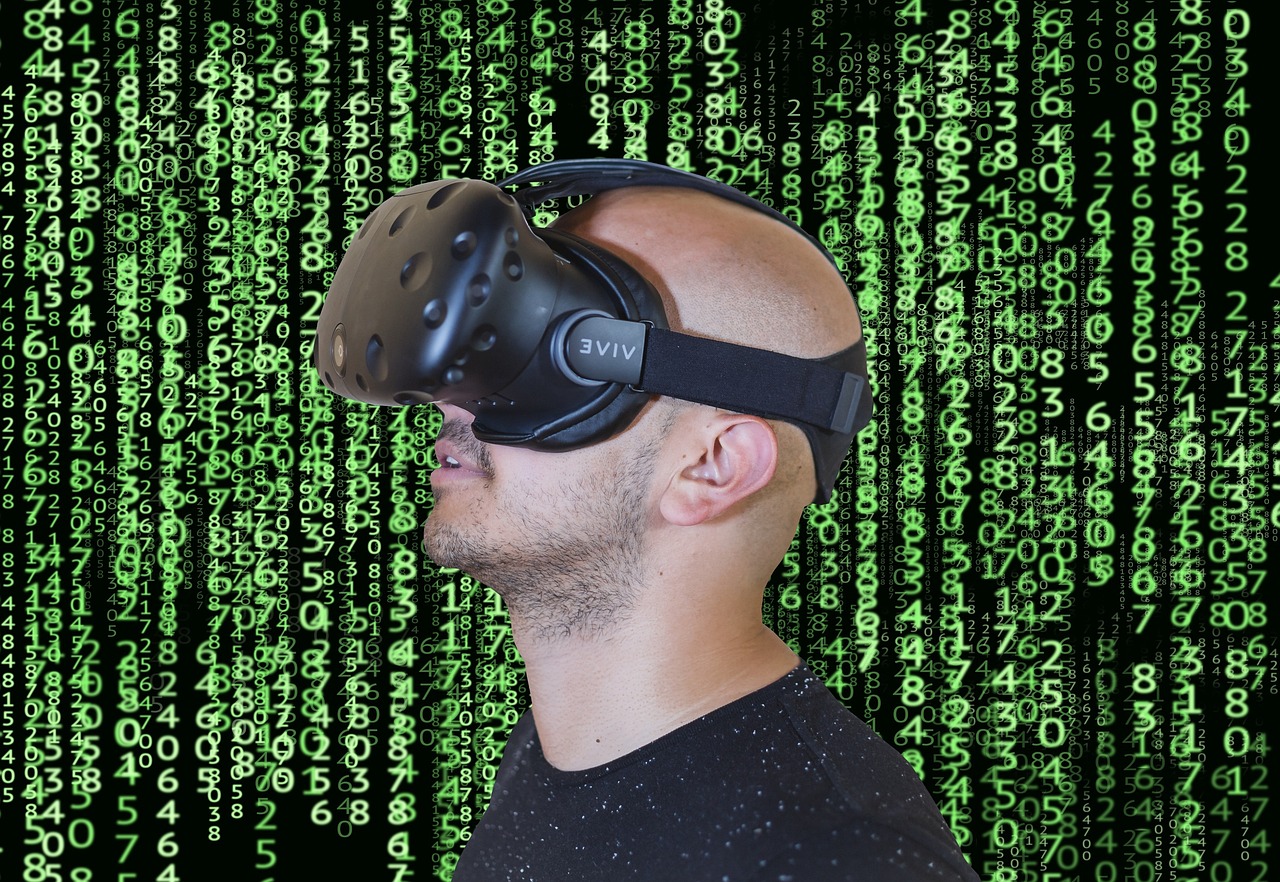
Future Trends in Biometric Wearables
As we look towards the horizon of technology, the landscape of biometric wearables is poised for a transformation that could redefine how military health monitoring is conducted. The rapid evolution of technology, particularly in the fields of artificial intelligence and sensor technology, is paving the way for innovative solutions that can significantly enhance the capabilities of these devices. One of the most exciting trends is the integration of advanced sensors that can monitor a wider array of physiological metrics, from blood glucose levels to hydration status, providing a comprehensive view of a soldier's health.
Imagine a future where a soldier's wearable device not only tracks heart rate and stress levels but also analyzes their biochemical markers in real-time. This kind of monitoring could allow for immediate interventions, potentially saving lives during critical missions. Furthermore, the incorporation of machine learning algorithms can enable these wearables to learn from the data they collect, predicting health issues before they become serious problems. For instance, if a soldier's data shows a consistent pattern of elevated stress levels, the system could alert medical personnel to provide support.
Another trend is the development of smart fabrics that integrate biometric sensors directly into clothing. This seamless integration not only enhances comfort but also ensures that soldiers can be monitored without the need for bulky devices. Picture a soldier wearing a uniform that continuously tracks vital signs, providing a constant stream of health data to command centers. This could revolutionize how military operations are conducted, allowing for real-time adjustments based on the health status of personnel.
Moreover, with the rise of the Internet of Things (IoT), biometric wearables will increasingly become part of a larger ecosystem. These devices will communicate with other military technologies, such as drones and command systems, creating a comprehensive health monitoring network. This interconnectedness means that data can be shared across platforms, providing a holistic view of soldier health that can influence tactical decisions on the battlefield.
However, as we embrace these advancements, we must also consider the implications of data security and privacy. With increased data collection comes the responsibility to protect sensitive information. Future biometric wearables will need to incorporate robust security measures to safeguard personal health data from potential breaches. This challenge is paramount, as military personnel must trust that their health information is secure while still benefiting from the insights provided by these technologies.
In summary, the future of biometric wearables in military health monitoring is bright and filled with potential. As technology continues to evolve, we can expect to see devices that are not only more advanced but also more integrated into the everyday lives of soldiers. The combination of advanced sensors, AI capabilities, and interconnected systems will create a new paradigm in health monitoring, ensuring that our military personnel are supported in ways we have yet to fully imagine.
- What are biometric wearables?
Biometric wearables are devices that track physiological data such as heart rate, stress levels, and other vital signs to monitor health and performance.
- How can biometric wearables benefit military personnel?
They provide real-time health data, enhance decision-making, and improve soldier readiness by allowing for immediate interventions based on health metrics.
- What challenges do biometric wearables face?
Key challenges include data privacy concerns and technological limitations, which need to be addressed to ensure effective implementation.
- What future trends can we expect in biometric wearables?
Future trends include advanced sensors, smart fabrics, AI integration, and improved data security measures to protect personal health information.
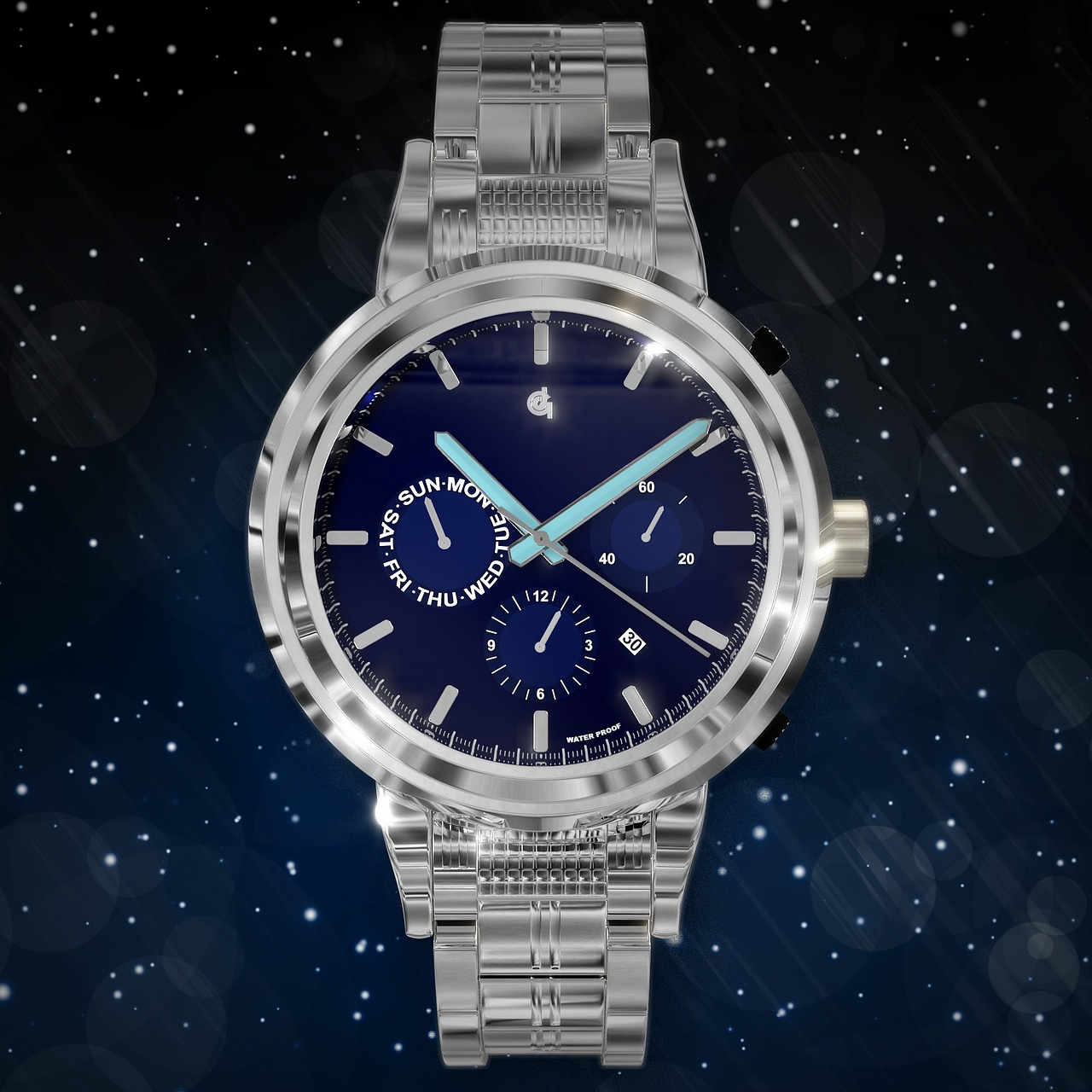
Case Studies of Successful Implementation
When it comes to biometric wearables in the military, real-world applications speak volumes about their effectiveness. Numerous case studies have emerged, demonstrating how these devices have transformed health monitoring and enhanced soldier performance. One notable example is the use of biometric wearables by the U.S. Army during training exercises. These devices were employed to monitor vital signs, including heart rate and body temperature, allowing commanders to make informed decisions based on real-time data. Imagine a scenario where a soldier is on the brink of heat exhaustion; with biometric wearables, the data can alert medics before a serious incident occurs, potentially saving lives.
Another compelling case study involves the integration of biometric wearables in special operations. The Navy SEALs, known for their rigorous training and demanding missions, have adopted these devices to track stress levels and fatigue. By analyzing physiological data, trainers can tailor recovery protocols to individual soldiers, ensuring they are in peak condition for their next mission. This personalization is akin to having a coach who knows your every strength and weakness, optimizing your performance to its fullest potential.
Moreover, the deployment of biometric wearables has been tested in combat zones. In one operation, soldiers wore devices that monitored their physical and mental states. The data collected not only provided insights into the immediate health of the personnel but also contributed to the development of predictive models for future missions. This proactive approach to health monitoring is revolutionary, as it shifts the focus from reactive treatment to preventive care.
To illustrate the impact of these implementations, consider the following table:
| Case Study | Application | Outcome |
|---|---|---|
| U.S. Army Training Exercises | Monitoring vital signs | Early intervention in heat-related illnesses |
| Navy SEALs | Tracking stress and fatigue | Improved recovery and readiness |
| Combat Zone Deployments | Real-time health monitoring | Predictive health models for missions |
These case studies not only highlight the versatility of biometric wearables but also showcase their potential to revolutionize military health monitoring. The ability to gather and analyze data in real-time empowers military leaders to make decisions that enhance soldier safety and effectiveness. As we continue to explore the capabilities of these devices, it becomes increasingly clear that they are not just gadgets; they are essential tools in modern warfare.
- What types of biometric data can wearables track? Biometric wearables can track a variety of physiological data, including heart rate, body temperature, stress levels, and even sleep patterns.
- How do biometric wearables enhance soldier safety? By providing real-time health data, these devices allow for early intervention in medical emergencies, helping to prevent serious health issues.
- Are there any privacy concerns with biometric wearables? Yes, data privacy is a significant concern. It's crucial to implement strict protocols to protect the sensitive information collected by these devices.
- What is the future of biometric wearables in the military? The future looks promising, with advancements in technology leading to more sophisticated sensors and AI integration for better health monitoring.

Conclusion and Recommendations
In conclusion, the integration of biometric wearables into military health monitoring is not just a trend; it's a transformative approach that has the potential to redefine how we understand and manage the health of our armed forces. As we've explored throughout this article, these devices offer a wealth of real-time data that can significantly enhance decision-making processes and improve soldier readiness. However, it's crucial to address the challenges associated with their use, such as data privacy concerns and technological limitations, to ensure that these tools are effective and secure.
To optimize the use of biometric wearables in military settings, several recommendations can be made:
- Invest in Research and Development: Ongoing research is essential to advance the technology behind biometric wearables. This includes not only improving sensor accuracy but also developing more robust data encryption methods to protect sensitive information.
- Enhance Training Programs: Military personnel should receive comprehensive training on how to use these devices effectively. Understanding the technology will empower soldiers to leverage the data for better health outcomes.
- Foster Collaboration: Collaboration between technology developers and military health professionals can lead to innovations that better meet the unique needs of military personnel. This partnership can help in customizing wearables that are not only functional but also comfortable for extended use.
Moreover, as we look to the future, it is vital to remain adaptable and open to the integration of emerging technologies, such as artificial intelligence and machine learning, which can further enhance the capabilities of biometric wearables. By embracing these advancements, the military can ensure that its personnel are equipped with the best tools available to monitor and maintain their health.
In summary, the journey of implementing biometric wearables in military health monitoring is just beginning. With a focus on overcoming challenges and a commitment to continuous improvement, these devices can play a pivotal role in safeguarding the health and performance of our soldiers, ultimately leading to a more effective and resilient military force.
Q1: What are biometric wearables?
A1: Biometric wearables are devices designed to track physiological data, such as heart rate, body temperature, and stress levels, providing real-time health monitoring.
Q2: How can biometric wearables benefit military personnel?
A2: These devices offer various benefits, including enhanced decision-making, improved soldier readiness, and the ability to monitor health conditions in real-time, allowing for timely interventions.
Q3: What challenges do biometric wearables face in military settings?
A3: Challenges include data privacy concerns, technological limitations, and the need for robust training for military personnel on how to effectively use these devices.
Q4: What is the future of biometric wearables in the military?
A4: The future includes advancements in sensor technology, AI integration, and a greater focus on data security, all aimed at enhancing the effectiveness of health monitoring for military personnel.
Frequently Asked Questions
- What are biometric wearables?
Biometric wearables are advanced devices designed to track and monitor various physiological data of individuals. These can include heart rate, body temperature, and even stress levels. In military settings, they play a crucial role in ensuring the health and performance of personnel by providing real-time health insights.
- How do biometric wearables benefit military personnel?
The benefits of biometric wearables in the military are numerous. They provide real-time health monitoring, which can lead to quicker medical responses. Enhanced decision-making is possible as commanders can access vital health data instantly, ensuring soldiers are fit for duty. This technology also contributes to improved soldier readiness, as potential health issues can be identified and addressed promptly.
- What challenges do biometric wearables face?
Despite their advantages, biometric wearables come with challenges. Data privacy is a significant concern, as sensitive health information must be protected from unauthorized access. Additionally, there are technological limitations, such as battery life and the accuracy of sensors, that can impact their effectiveness in the field.
- How can biometric wearables be integrated with existing military technologies?
Integrating biometric wearables with existing military technologies is essential for maximizing their potential. This can be achieved through the development of standardized protocols that allow different devices to communicate with each other. By ensuring interoperability, military personnel can utilize comprehensive health data effectively, enhancing overall mission success.
- What are the future trends in biometric wearables?
The future of biometric wearables is exciting, with trends pointing towards the integration of advanced sensors and artificial intelligence. These innovations can lead to more accurate health monitoring and predictive analytics, allowing military leaders to make informed decisions based on anticipated health outcomes.
- Can you provide examples of successful biometric wearable implementation?
Yes! There are several case studies showcasing the successful implementation of biometric wearables in military contexts. For instance, some units have reported improved soldier performance and reduced injury rates by using these devices to monitor fatigue and stress levels during training exercises.
- What recommendations can be made for optimizing the use of biometric wearables?
To optimize the use of biometric wearables, ongoing research and development are crucial. Military organizations should invest in enhancing the technology, focusing on user-friendly interfaces and robust data security measures. Additionally, training personnel on the effective use of these devices can ensure they are utilized to their full potential.



